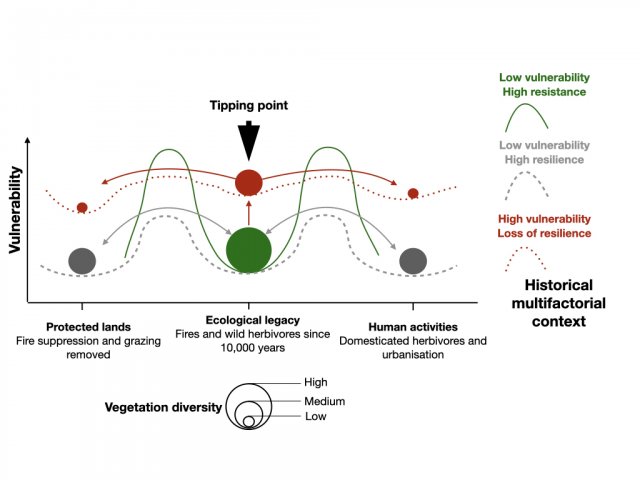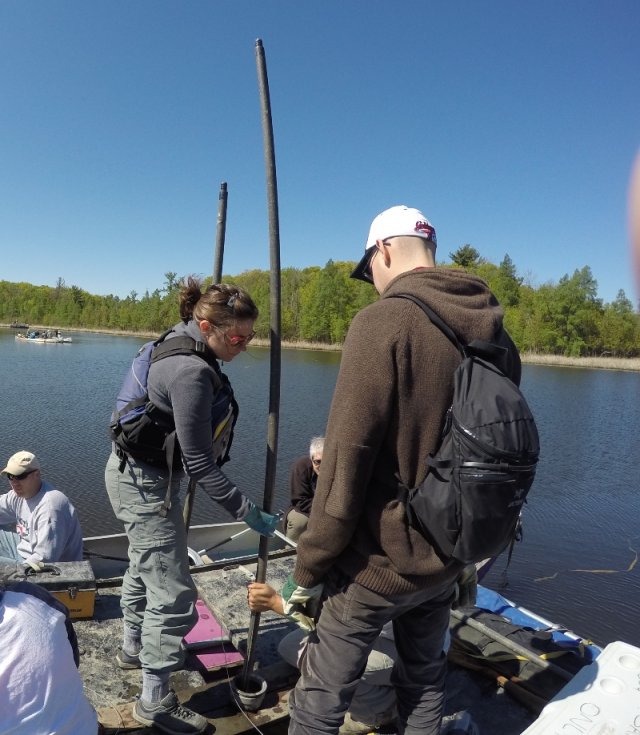Submitted
21. Leys B., Nicod C., Manneville V., Letourneur C.,Bouton Y., Chemidlin Prevost-Boure N., Gillet F. (major revisions) Grassland diversity of mountain pastures in response to soil nutrient content, fertilization and cattle season load. Agricuture, Ecosystem and Environment
2020
20. Heyer J., Brunelle A., Lundeen Z., Leys B., Rittenour T. Brewer S., Power M., (accepted) Sediment age control on the Dolores River Lake Bottom oxbow record in eastern Utah, USA. Quaternary International
19. Gauzere J. , Teuf B., Davi H., Chevin L.-M., Caignard T., Leys B., Delzon S., Ronce O., Chuine I. (2020) Where is the optimum ? Predicting the variation of selection along climatic gradients and the adaptive value of plasticity. A case study on tree phenology. Evolution Letters 4-2 : 109-123
2019
18. Leys B., Griffin G., Larson R.E., and McLauchlan K.K. (2019) Century-scale fire dynamics in an ecotonal ecosystem. Fire 2, 51.
17. Nicod C., Leys B., Greffier B., Hennequin C., Ferrez Y., Gillet F. (2019) Diversities of the plant community and management impacts in grasslands through diagnostic species method Ecological indicators 107, 105584.
2018
16. Leys B., Marlon J., Umbanhowar C., and Vannière B. (2018) Global fire history of grassland biomes. Ecology and Evolution, 8:8831–8852.
15. Leys B., Curt T., and Elkin C. (2018) Mosaic landscape pattern explained the vegetation resistance to high fire frequency in Mediterranean area over the last six millennia. International Journal of Earth Science and Geophysics, 4 : 017.
14. Belle S., Tonno I., Poska A., Musazzi S., Leys B., Lami A. (2018) Long-term effects of climate change on sources and pathways of organic carbon fuelling the benthic secondary production in small lakes. Freshwater Biology, 1:9.
2017
13. Leys B., Commerford J.L., McLauchlan K.K. (2017) Reconstructing grassland fire history using sedimentary charcoal : considering count, size and shape. Plos ONE, 12 (4), e0176445.
2016
12. Leys B., Higuera P, McLauchlan K.K. and Dunnette P (2016) Wildfires drive geochemical change in a subalpine forest over the past six millennia. Environmental Research Letters, 11 (12), 125003.
11. Leys B., Likens G. E., Johnson C. E., Craine J. M., Lacroix B. and McLauchlan K. K. (2016) Natural and anthropogenic drivers of calcium depletion in a northern forest during the last millennium. Proceedings of the National Academy of Science, 113(25), 6934-6938.
10. Leys B. and Carcaillet C. (2016) Subalpine fires in the Alps for the past 8000 years : the roles of vegetation, climate and, ultimately, land uses. Climatic Change, 135, 683-697.
9. Vannière B., Blarquez O., Rius D., Doyen E., Brücher T., Colombaroli D., Connor S., Feurdean A., Hickler T., Lemmen C., Leys B., Massa C. and Olofsson J. (2016) 7000-year human legacy of elevation-dependent European fire regimes. Quaternary Science Reviews 132, 206-212.
8. Commerford J., Leys B., Mueller J. and McLauchlan K. (2016) Great Plains vegetation dynamics in response to fire and drought episodes during the Holocene at Fox Lake, Minnesota, USA. The Holocene, 26 (2) 302-313.
2015
7. Leys B., Brewer C.S., Mueller J., McConaghy S. and McLauchlan K.K. (2015) Fire history reconstruction in grassland ecosystems : charcoal amount reflects the local area burned. Environmental Research Letters, 10 (11), 114009.
2014
6. Leys B., Carcaillet C., Blarquez O., Lami A., Musazzi S. and Trevisan R. (2014) Resistance of mixed subalpine forest to fire frequency changes : the ecological function of dwarf pine (Pinus mugo ssp. mugo). Quaternary Science Reviews, 90(0), 60-68.
5. Leys B., Finsinger W. and Carcaillet C. (2014) Historical range of fire frequency is not the Achilles’ heel of the Corsican black pine ecosystem. Journal of Ecology, 102(2), 381-395.
2013
4. Leys B., Carcaillet C., Dezileau L., Ali A. A. and Bradshaw H.W.R. (2013) A comparison of charcoal measurements for reconstruction of Mediterranean paleo-fire frequency in the mountain of Corsica. Quaternary Research, 79, 337-349.
3. Blarquez O., Girardin M., Leys B., Ali A. A., Aleman J., Bergeron Y. and Carcaillet C. (2013) Reconstruction of paleo-fire based on an ensemble-member strategy applied to sedimentary charcoal. Geographical Research Letters, 40, 2667-2672.
2. Aleman J., Saint-Jean A., Leys B., Carcaillet C., Favier C. and Bremond L. (2013) Estimating phytolith influx in lake sediments. Quaternary Research, 80, 341-347.
2012
1. Aleman J., Leys B., Apema R., Bentaleb I., Dubois M. A., Lamba B., Lebamba J., Martin C., Ngomanda A., Truc L., Yangakola J-M., Favier C. and Bremond L. (2012) Reconstructing savannah tree cover from pollen, phytoliths and stable carbon isotopes. Journal of Vegetation Science, 23, 187-197.
CHAPITRE DE LIVRE
Chistopher Carcaillet et Bérangère Leys Une intime relation lie le feu et la forêt corse depuis plus de 11000 ans. Publié dans Feu et foret en Corse, ed. Stantari, 2012.
PhD thesis
Facteurs explicatifs de la dynamique des végétations au cours de l’Holocène en système montagnard méditerranéen et alpin : climat et perturbation feu. (Major driving force of vegetation dynamics in Alpine and Mediterranean mountain area during the Holocene : fire and climate) Supervisor Pr. Christopher Carcaillet. Delivered the 19 December 2012.







